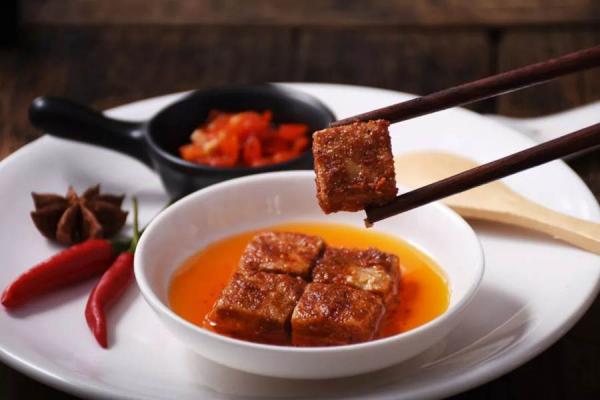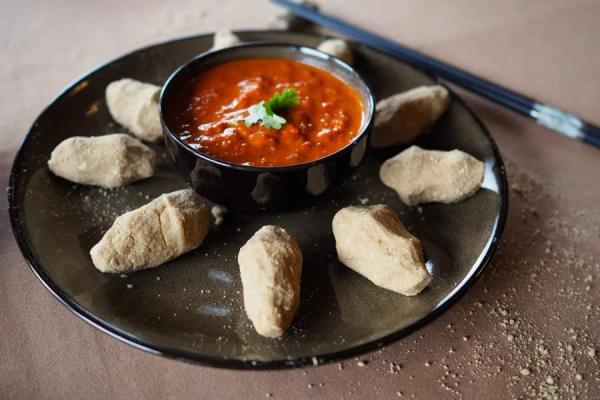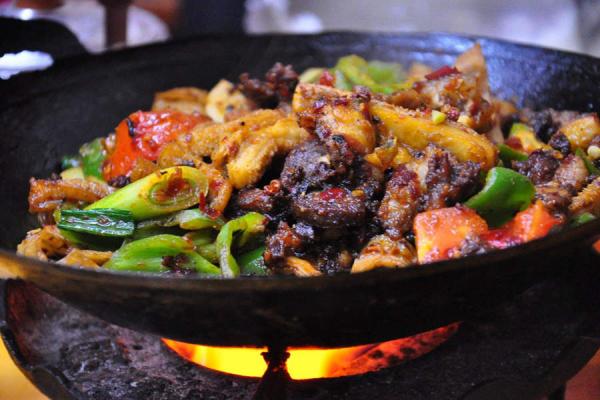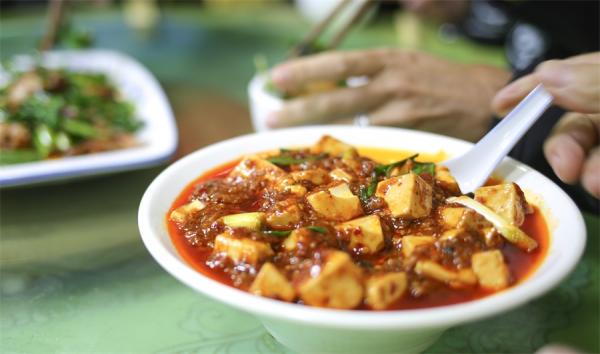China Food Culture
The food culture is a fundamental part of Chinese culture. The creation of Chinese traditional food culture was greatly influenced by philosophical thoughts of Yin-Yang and Five-elements, Confucius ethics, instructions of TCM (Traditional Chinese Medicine), as well as the national character, artistic achievement and dietary aesthetics, etc. It originated from the Chinese practice of production and life in the past thousands of years. The development of food sources, utensils, dietary philosophy and aesthetics, and health care has played an unparalleled impact on ourselves and neighboring countries. With the globalization going on, the Chinese dietary culture has further widespread and benefited the whole world. Learn China food culture before making your foodie tours to China.
The beauty of neutrality is the highest aesthetic ideal of Chinese traditional culture. Chinese philosophers believe that everything on Earth finding its place in a state of "neutralization" will grow and develop. This aesthetic ideal is built on the harmonious unity of the individual and society, man and nature. This idea of realizing the "Beauty of Neutralization" was inspired and influenced by ancient cooking practices and theories, which in turn affected people’s entire dietary life.

Features of Chinese Food Culture
Eating based on seasons
Eating seasonal foods throughout the year is a major feature of Chinese cooking. According to the ancient medical classics, all Chinese people know that we are supposed to cook and eat dishes according to the seasons. In winter, the food should have a stronger flavor with brothy taste, while in summer, light and cool. Food is often stewed and simmered in winter, and cooler or cold dishes in summer, not just the taste, but its nature.
Connecting with other cultural elements
For high profile and educated people in China, food is not only to fill the stomach and satisfy the mouth, but also to gain inspirations and spiritual enjoyment. For a certain banquet, the diners should know what materials are used for cooking and the best way to enjoy; they are also expected to know the stories and traditions behind the presented food. For example, the names of Chinese dishes could be confusing to most of the foreigners. Some dishes are named after the actual food materials, seasoning and cooking methods, while others based on historical anecdotes, celebrities’ stories, or the appearance of the dishes, such as "Buddha Jumping Over the Wall", "General Crossing the Bridge", "Lion Head" , "Beggar Chicken", and "Dongpo Meat".
- Read more about Table Manner in China
Emphasis on culinary aesthetics
Chinese people pay great attention to presentation of dishes, stressing on the match and harmony of food color, aroma, taste, shape, and utensils. In the Chinese eyes, the beauty of the dishes is multifaceted. Some dishes are prepared in kitchen like an art work. Measures will possibly be taken to mix different-colored food materials in on dish to make it look more enticing to eyes and balanced in nutrition. Whether it is a carrot or a cabbage, it can be carved into an artistic ornament by the food. For different dishes, different plates will be used to contain the food based on its nature and shape.

Integrating Food with Medicine
Many people of China believe in homology of food and medicine. It was recorded in the ancient medical books that "medicine and food are from the same source" and "medicine and diet have the same function". Long time ago, Chinese began to make full use of medicinal value from our daily food to make various delicious dishes, achieving the purpose of prevention and treatment of certain diseases. Any excessive use of a certain flavor will do harm to the body.
After thousands of years of evolution and development, Chinese people developed a complex and sophisticated culinary culture. As a foreigner, you will have the chance to taste countless options in this vast country. To evaluate the levels of a meal, Chinese people usually consider the following aspects:
Food material selection
The selection of good ingredients is the primary skill of a Chinese chef, and this is the basis for making a great Chinese meal. The raw materials used in each kind of cuisine, including main ingredients, subsidiary ingredients, seasonings, etc., have their requirements to guarantee the quality of the cuisine. Confucius said, "We should eat but finely ground grain and finely chopped meat ". Before cooking, a good chef must consider the characteristics of food variety, place of production, season, growth period, etc., and those fresh, tender and high-quality materials are preferred.
Knife cutting techniques
Chinese chef use knife skillfully to cut the raw materials to a neat and needed shape good for cooking, which is suitable for the food being evenly heated, easy to masticate, while with an appealing and appetizing shape. So this is one of the important skills of Chinese chef. In ancient times, Chinese have attached great importance to the cutting techniques of knife. After long time practice, a wealth of knife skills have been created by Chinese cooks, which can process the food material into smaller bits of different shapes for cooking, including slices, strips, shreds, chunks, cubes, granules, mash, etc. The food ingredients can also be carved into all kinds of flowers or Chinese characters for decoration of the dishes, especially in a festive banquet.

Proper fire management (Huohou)
Huohou is a keyword and term of Chinese cuisine. The word Huohou is a combination of 2 characters: fire (火) and “wait” or “duration”, which means heat control while cooking. Chinese believe that heat control plays an importance role in making a delicious dish. The wok/pot temperature is changing rapidly, and it is difficult to achieve the just-right challenge without many years of practice. This is a unique skill required for all Chinese chefs. Chinese chefs can accurately distinguish different firepowers such as strong fire, medium fire, and weak fire, they are familiar with the heat resistance of various ingredients, skillfully control the fire time, and are good at mastering the performance of heat transfer objects (oil, water, gas). According to the ingredients’ nature, water content and chopped shapes/sizes, Chinese chefs have to determine the order of putting them into the wok one after another, which should be applied flexibly for different dishes, in this way, the ingredients in the dish can be cooked to the targeted condition, while retaining its original flavor.
Colorful cooking techniques
China’s vast territory created diversified cultures, so as to the cuisines. Each cuisine has their own cooking style and techniques: stir-fry, fry, simmer, paste, braise, stew, boil, sauce, steam, roast, and smoke, etc. Different techniques offer different flavors for the same food ingredient, and make even dozens of famous dishes based on each technique. So foreigners can always taste very different foods prepared in many different ways from place to place in this country. The eight most notable cuisines include Sichuan cuisine, Shandong cuisine, Guangdong cuisine, Jiangsu cuisines, Zhejiang cuisine, Fujian cuisine, Hunan cuisine and Anhui cuisine. You can notice that there is only one cuisine (Shandong) coming from North China, the rest are all from Mid or South China. This is probably because of the more food ingredients are available in the warmer south China, especially those areas by the sea or with some rivers or lakes, where can offer aquatic food options, they were precious in ancient time. The chefs tried to make the best of the ingredients, hence, you can see many of the local signature dishes are those of sea/river/lake food.
Blend of five flavors
Chinese people believe there are five tastes in food, namely, sourness, sweetness, bitterness, pungency and saltiness. To achieve the harmony of five flavors is also an important task of Chinese chefs. It is quite common that in one Chinese dish there are two or three different tastes. The chef should know the trick of blending the tastes. The condiments are properly proportioned and not affecting each other. When you eat the food, you feel that all kinds of flavors merge into food ingredients in a harmonious way. Just like listening to a chorus. It is necessary to clearly hear the high and low voices, and maintain an overall balanced chorus effect.

The roles of seasoning are followed as below:
- Eliminate the peculiar smell of raw materials;
- Add more flavors to the ingredients;
- Determine the overall taste of the dish;
- Increase food fragrance;
- Give dishes a better look with more colors and luster.
Adoption of Elegant dishware
Yuan Mei, a famous poet, gourmet (1716-1798) in Qing Dynasty, wrote in his book “Sui Garden Food List”: Good food must be matched with beautiful dishware. In this way, the dish can achieve the goal of becoming a real outstanding one. For a high-end banquet, it is important to use quality dish plates with proper shapes and appealing decorative patterns, so a great dish would be the consequence of a good match of yummy food and elegant plate.
The traditional Chinese dishwares are mainly made of pottery, porcelain, bronze, gold and silver, jade, lacquer, and wood. The beauty of these utensils will give the users aesthetic pleasure, which is not limited to their quality, shape, and decorative patterns, but also manifests in the harmonious combination of food and its container.
As the Chinese restaurants are widespread all over the world, foreigners can eat Chinese food at home at any time. Most of the food served in these restaurants are not really the typical style of Chinese food, but renovated food adapting to the taste of locals. Seeing is believing. Why not come and visit China? Immerse yourselves in the deep rooted culinary culture here. The colorful cuisines will never let you down. You don’t have to love them all, anyway, you will definitely find and taste something you really like.
Further Reading: